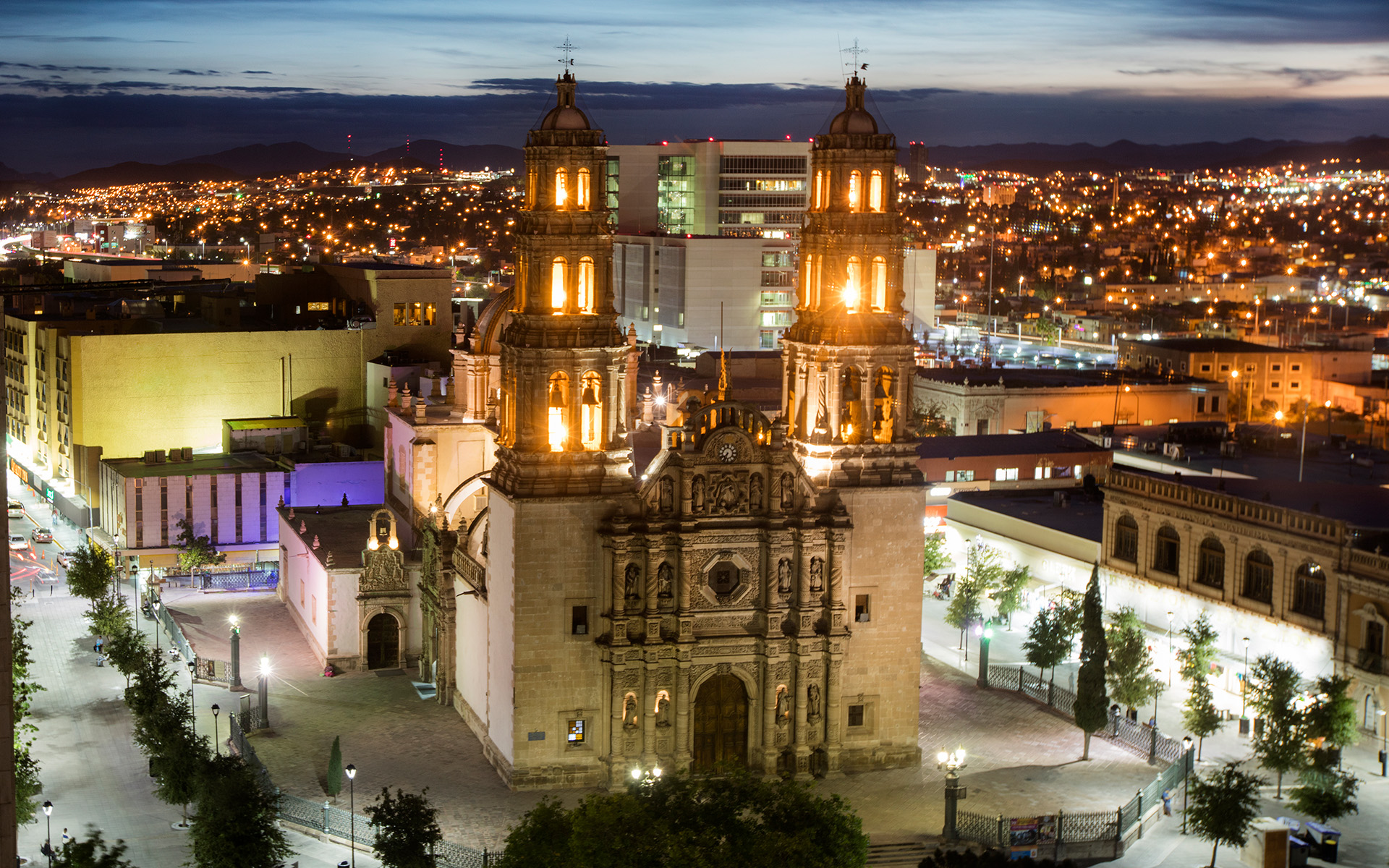A successful export manufacturer, the city is grappling with drought and water scarcity, and water recycling is a priority for factories and officials.
City Class Score
| Commercial Hubs | |
| Export Champions | |
| Mobility Connectors | |
| Climate Resilient |
Corporate HQs, MNC presence, branded outlets, hotels, manufacturing, start-up ecosystem,
transport linkages, population, and income.
Go to the class information
Manufacturing, industrial parks, export share and share change by category, air and port
infrastructure, freight time to market, trade agreements, and expert interviews.
Go to the class information
Passenger traffic, flight connectivity, air-cargo flights, port infrastructure, container
ship sailings, and major road networks.
Go to the class information
Coastal and river flooding, extreme rain, extreme heat and humidity, cyclones, and water
scarcity.
Go to the class information
Chihuahua’s historic center showcases its beautiful colonial architecture and
the country’s rich heritage. A short stroll from the city’s magnificent cathedral is the former
house of the Mexican revolutionary Francisco “Pancho” Villa, since converted into a museum. It’s a
beautiful part of the country, with a mix of mountainous and desert landscapes that served as a
backdrop to Pancho’s activities as well as other major historic events. But it is also increasingly
dry after several years of drought and growing competition for water.
Chihuahua is one of
Mexico’s many industrial cities best placed to profit from the rebalancing of global supply chains,
including “China plus one” and nearshoring strategies. The city has already attracted multinationals
across the aerospace, automotive, and white goods industries, such as Bell and Honeywell.
Chihuahua’s accessibility to the United States market via road freight is also an attraction,
assuming no delays in border inspections. However, the city’s vulnerability to climate change,
especially water shortages, requires investment in resiliency infrastructure to secure the city’s
long-term success.
Chihuahua’s water stress levels are among the highest in Latin America,
and comparable to waterscarce cities across India and North Africa. The city’s semi-arid climate
makes it highly dependent on groundwater, but the region has also suffered from two years of drought
and water levels have fallen. It’s a story that plays out in other Mexican industrial hubs, such as
Ciudad Juárez and Mexicali. Former President Andrés Manuel López Obrador even went so far as to say
in 2023 that producing in Nuevo León, to Chihuahua’s southeast, was not a viable option for Tesla
since “there is no water.”
Chihuahua’s use of treated wastewater to irrigate green spaces
has helped ease the pressure. Manufacturers are also investing in water recycling and reuse, in some
cases targeting 100% reuse. It’s only one of many stories. At a $500 million brewery about one
hour’s drive south of Chihuahua, a global brand plans to recycle 30% of its water. Chihuahua isn’t
alone in grappling with water scarcity, but the situation will only worsen with climate change.
Investing in resiliency is key to the city’s ongoing industrial success and competitive positioning
versus its domestic and global peers.

